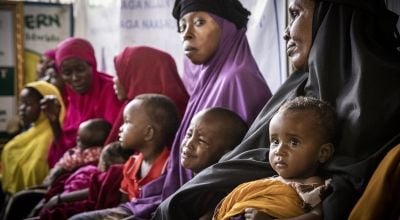
Read our 2024 annual report

Knowledge Hub
For the second year in a row, Somalia is the country with the highest levels of hunger in the world, as calculated by the 2025 Global Hunger Index. Before 2024, it most recently held this rank in 2021.
The country has faced a protracted hunger crisis driven by ongoing conflict, economic challenges, and climate shocks. This has left over half of the population (53.2%) undernourished — the highest rate of undernourishment in the world. It also has the third-highest child mortality rate (10.6%), and a high rate of child stunting (a key indicator of malnutrition) — 23.9%.
In the last decade, the country has also faced famine risks on three separate occasions in 2017, 2022 and 2023. Early-warning systems and responses have offset these risks. And, overall, Somalis have made significant progress in reducing hunger rates since 2000. However, the situation remains dire, particularly for the 4.35 million people that the Integrated Food Security Phase Classification (IPC) estimates will face high levels of acute food insecurity by the end of this year.
Here are five things you need to know about hunger in Somalia as we enter 2026.
1. What’s causing hunger in Somalia?
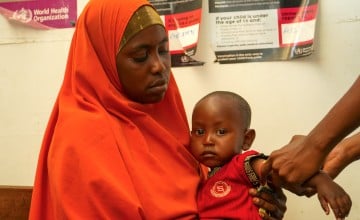
Hunger in Somalia is a complex issue, but much of it comes down to conflict and climate. The country has been locked in a cycle of crisis for several decades. Ongoing conflict and political instability have weakened infrastructure as well as the ability on the government’s part to respond to these crises. Insecurity has left many families displaced in IDP camps, abandoning their farms and entering situations where resources (including food assistance) are limited.
Somalia is also on the frontlines of the climate crisis. It has faced decades of drought — including the recent Horn of Africa crisis, the most devastating drought to hit the Horn of Africa region in 40 years. While rains eventually arrived in East Africa in the spring of 2023, they also triggered widespread flooding after so many dry seasons. The same thing happened during the country’s late-autumn/early winter rain season into 2024.
» Learn more about the humanitarian crisis in Somalia
2. 80% of Somalis rely on agriculture and pastoralism to feed their families
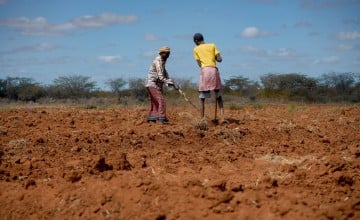
The environmental shocks are especially important in the context of Somalia’s food security crisis. “Somalia was brought to the brink of famine following the worst drought in 40 years,” Concern’s former Emergency Country Coordinator Joshua Pollard said last year. “That has now been followed by once-in-a-hundred-years flooding. The impact has been colossal.”
We’re now back to poor rainfall in the country in 2025, with failed crop and livestock production in the north. Continued flooding has had similar effects in the southern and central regions. This year’s autumn rains are expected to be below normal as well. This, combined with high food prices and ongoing conflict, will leave an estimated 4.35 million people facing high levels of food insecurity as we enter 2026.
3. While food may be available, it’s not always affordable
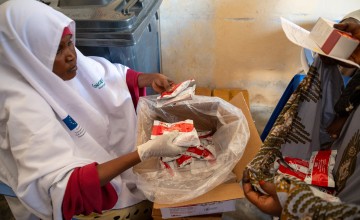
As we mention above, food prices are also high right now, adding fuel to Somalia’s hunger crisis. Studies have shown that food price inflation in Somalia is also linked to conflict within the country. These inflation peaks raise the costs of available staples to a point that most civilians can’t afford basics like rice and flour. Similar patterns follow with natural disasters.
On top of this, Somalia was hit especially hard by the food crisis triggered by the war in Ukraine. The country relies on Ukraine and Russia for more than 90% of its grain supplies, making supplies short as conflict cuts off trade routes and supply chains. The timing could not have been worse as the conflict in Ukraine escalated in early 2022 — the height of the Horn of Africa drought, when hundreds of thousands of Somalis faced a credible famine risk.
While supplies were soon able to reach the country, it was also hit by inflation driven by the conflict’s effects on global food and fuel trade. As Concern Somalia Country Director Richard Nunn explained of the situation: “Although you have food in the market, the ability of people in those areas to buy or get access to that food is very limited.”
4. Hunger rates are expected to rise through the end of the year
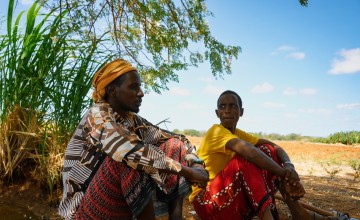
Between now and the end of 2025, the IPC estimates that hunger rates in Somalia will increase by as much as 27% compared to this summer, leaving an additional 928,000 people facing high levels of food insecurity (IPC Phase 3 or higher), with this autumn’s rainy season expected to fail.
While this is expected to push many Somalis from relative food security to some level of insecurity, one of the biggest impacts of this will be among those already facing high levels of hunger: This summer, the IPC estimated that approximately 623,000 Somalis were at Phase 4 of food insecurity (one step below famine or famine-like conditions). In the final three months of 2025, they estimate that number will increase to 921,000 — an increase of nearly 50%. Those most likely to experience this shift are already in IDP camps, particularly in the Bay and Bakool regions (both in the southwest).
Children are especially vulnerable in these situations with hunger affecting their growth and vulnerability to communicable diseases (including diarrhoea, malaria, and cholera). The IPC estimates that 1.85 million children under the age of five will be diagnosed with acute malnutrition between July 2025 and June 2026.
5. Funding cuts may leave needs less than 10% met in 2025

A drop in humanitarian funding further threatens the situation in Somalia in 2025. Earlier this month, the World Food Programme reported that funding cuts mean that assistance may go from reaching 1.1 million people in Somalia to just 350,000 — meaning that essential food aid will reach less than 10% of those who require it.
“The current level of response is far below what is required to meet the growing needs,” said one representative from the WFP. “Without urgent funding, families already pushed to the edge will be left with nothing at a time when they need it most.”
This is one of the biggest threats facing us at a time when we know hunger is on the rise. We know what’s in store, we know how to address it, and we know what will happen if we’re unable to meet that demand.
Hunger in Somalia: Concern’s response
Concern has been in Somalia since 1986. Addressing the causes of hunger in the country continues to be central to our work in the country, with both emergency interventions and longer-term projects designed to build the resilience of affected communities (especially those who are in protracted displacement). We are proud to be UNICEF’s main nutrition partner in the Wadajir district.
A key pillar of our response is unconditional cash transfers (delivered electronically via mobile phones). These enable families to quickly receive money to buy what they most need from local markets, including food and other essentials. Between January 2022 and the end of March 2024, Concern Worldwide distributed €23 million (provided by the European Union) to families, which in turn saved the lives of over 617,000 people.
At the end of 2024, one-fifth of Somalia’s population was coping with high levels of food insecurity — including 1.7 million children facing acute malnutrition (roughly a quarter of whom were facing severe acute malnutrition). Working with both local partners in Wadajir as well as the Ministry of Health, we delivered specialised nutrition services through 17 static and mobile facilities, treating over 63,000 children. We also worked with over 160,000 caregivers to give them the support they needed in ensuring the continued health and success of their families.




